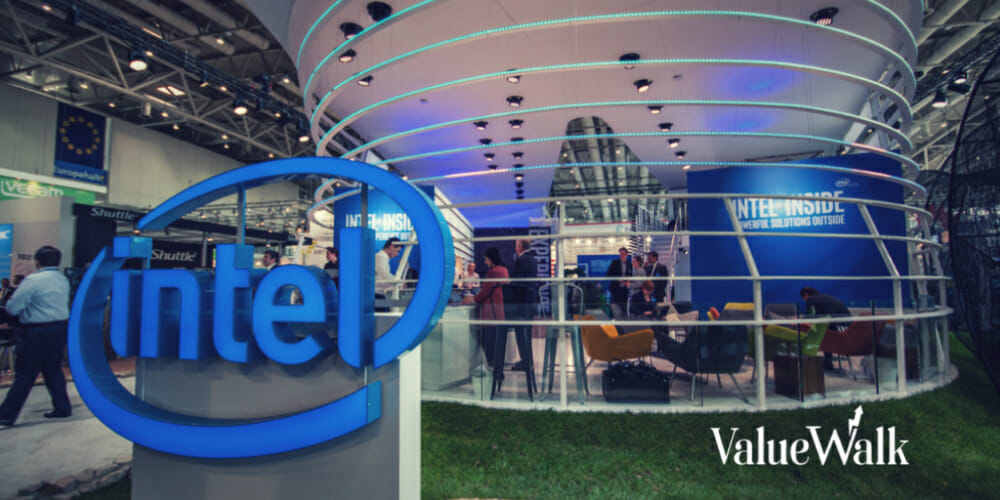Intel stock falls due to foundry failure

Intel (NASDAQ:INTC), once a respected American chipmaker, is now an object of widespread skepticism and sometimes ridicule. Pumping capital into its chip foundry division was expected to set Intel apart from rivals such as Advanced Micro Devices (NASDAQ:AMD), but new data suggests future-proofing the business could come at a huge cost.
Taiwan Semiconductor (NYSE:TSM) also has a foundry business. However, the U.S. government wants to boost domestic processor production and is willing to provide financial support to Intel. While this is bullish for Intel stock over the long term, short-term hiccups are bound to occur as the company spends money today to plan a comeback next quarter.
Financial markets undoubtedly tend to be forward-looking, but they are also highly sensitive to immediate headline shocks. Ultimately, if INTC falls sufficiently there could be an attractive buying opportunity, but be prepared for problems as the chipmaker struggles with the growing pains of its foundry ambitions.
Ask short-sighted traders to take a long-term view
It would be a good idea to discuss Intel’s announcement of a “financial framework” for its foundry division ahead of the bombshell reveal that sent Intel shares tumbling in after-hours trading on Tuesday. Intel expects the division, officially called Intel Foundry, to achieve “profitable growth” and “improving operating margins” at some point.
Regarding ‘profitable growth’, the market currently appears to be taking the stance of ‘I will believe it when I see it.’ It’s hard to blame investors for being skeptical, especially when Intel is bracing for immediate pain in the market with its statement that “Intel Foundry operating losses are expected to peak in 2024.”
That’s like saying, “Things will get better, but they’re not right now.”
Stock traders aren’t known for being extremely patient, and with NVIDIA (NASDAQ:NVDA) continuing to grow at a breakneck pace, the market isn’t going to sit back and wait for Intel’s losses to “peak” .
Moreover, the company is apparently “pursuing Intel Foundry to achieve breakeven operating margins between now and the end of 2030.” Again, Intel is basically asking investors to be very patient and forgiving. This is a tall order when the market has a lightning-fast attention span and a tendency to focus on shiny objects instead of slow, steady improvements.
On the other hand, holding INTC stock for a long period of time can lead to big profits. Intel hopes to achieve a non-GAAP gross margin of 40% and a non-GAAP operating margin of 30% for Intel Foundry by the end of 2030. To achieve this, the company will deploy its foundries to “manufacture a greater percentage of Intel products.” ” It may not be easy, but it is a worthwhile endeavor.
Intel’s struggling foundry
There’s nothing inherently wrong with Intel pursuing ambitious goals for its chip foundry segment. Unfortunately, the company’s recent financials don’t seem to inspire confidence among cautious investors.
Still, according to the new disclosure, Intel Foundry’s 2023 revenue totaled $18.9 billion. If that sounds impressive at first, consider that the division’s 2022 revenue totaled $27.5 billion.
This is not a positive sign for investors hoping to see immediate results from Intel CEO Pat Gelsinger’s innovation efforts. Focusing on Intel Foundry and producing chips for artificial intelligence (AI) applications is part of Gelsinger’s comeback strategy.
Unfortunately, Intel’s comeback story won’t unfold without challenges and capital expenditures. Gelsinger and company deserve praise for honestly reporting Intel Foundry’s financial struggles, but sometimes the market can punish full disclosure rather than reward.
Nonetheless, it’s clear that Gelsinger is determined to expose the good, the bad, and the ugly about Intel Foundry.
“We believe in transparency and accountability. The necessary changes are well underway,” the Intel CEO assured.
Speaking of transparency, Intel admitted that its foundry business suffered an operating loss of $7 billion in 2023. This could be a deal breaker for skeptical investors as it represents a setback compared to Intel’s $5.2 billion operating loss in 2022.
Your time period should determine your strategy.
The sale of INTC stock may be prolonged due to Intel Foundry’s expanding operating losses. As a result, short-term traders may want to get out of the way and allow sellers to control stock price action for a while.
But if the time frame extends to years rather than days, weeks, or months, holding your nose and keeping Intel stock in your portfolio isn’t a terrible idea. Ultimately, Gelsinger’s vision of Intel becoming a foundry business powerhouse may be realized. If that happens, Intel stock has the potential to deliver huge long-term gains for anyone willing to endure today’s pain.



